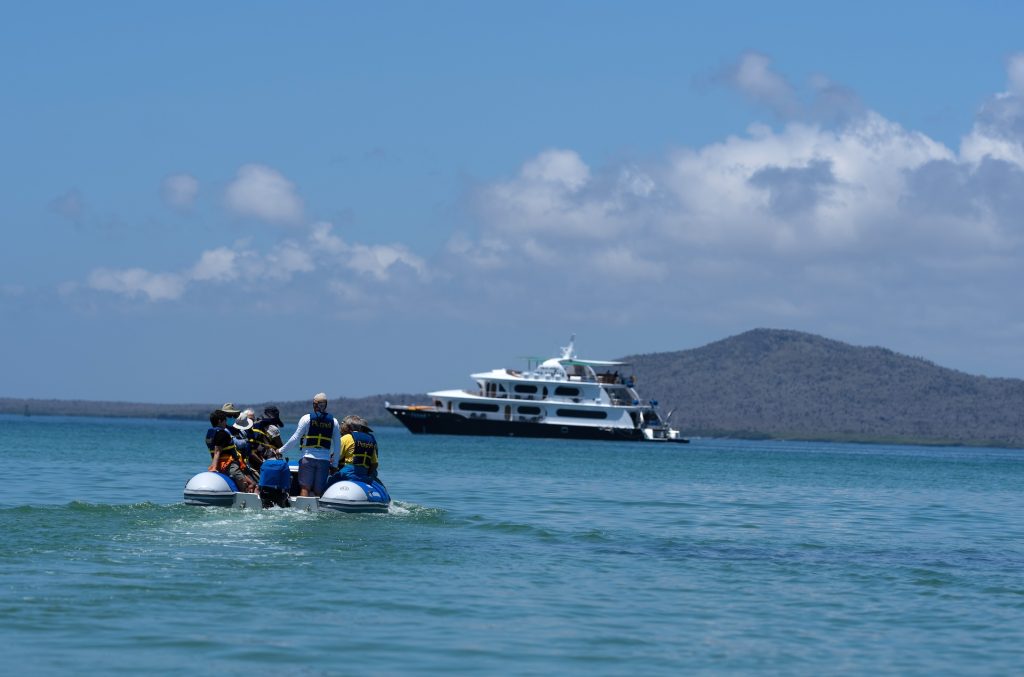Imagine capturing the brilliant red-and-orange-colored Sally Lightfoot crab against a backdrop of lava rocks along the water’s edge. The enormous wingspan of a Galapagos albatross as it soars above the Pacific Ocean. The bright blue feet of blue-footed booby birds during their courtship dance. A century-old giant tortoise gingerly munching on prickly pear cactus, practically oblivious to your presence.
Underwater, curious sea lions swirl like ballerinas, Galapagos penguins dive down, hunting prey, and reef sharks silently glide near the floor of coral reefs.
These are just some incredible photography opportunities that await travelers to the Galapagos islands on our new Galapagos Wildlife Photo Expedition.
A Photo Adventure in the Enchanted Isles
Despite exposure to tourists for nearly a century, the wildlife in the Enchanted Isles remains unbothered by human presence, allowing photographers to get close enough for the best shots. On our immersive 17-day adventure in the Galapagos, visitors will have a full day in Quito and then set out on a private chartered yacht, the Petrel, to visit 15 diverse islands in the archipelago.
Some of the main stops include San Cristobal, Santa Cruz, Española, Isabela and Floreana, all offering various species and natural wonders to admire and photograph. A whopping 97% of the islands’ land area makes up Galapagos National Park, with endemic species like marine iguanas, flightless cormorants, frigatebirds, Darwin’s finches and Galapagos tortoises, penguins, hawks, fur seals and more found nowhere else in the world.
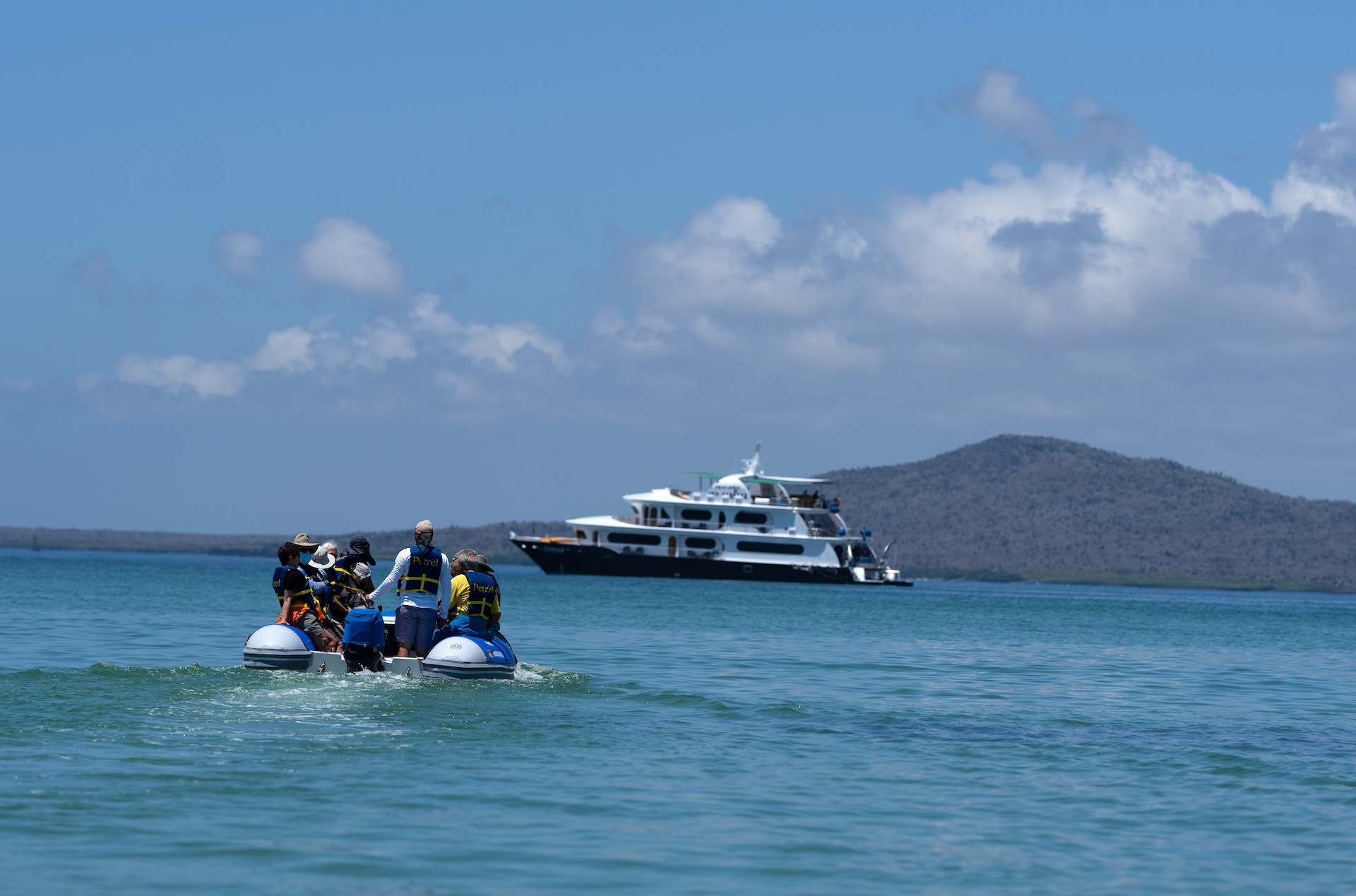
Nat Hab guests cruise back to the Petrel by panga © Richard de Gouveia
During daily excursions, our small group of no more than 15 travelers is divided into even smaller groups, ensuring that guests have an intimate and low-impact experience and allowing for close but safe encounters with wildlife.
Each small group is helmed by one of our naturalist Expedition Leaders (three total on each trip!) who not only offer information and interpretation about the wildlife and landscapes, but who also provide guidance on photography best practices, ethics of wildlife photography, underwater photography advice and post-production techniques that can augment and improve images.
Keep reading to learn about the amazingly diverse wildlife and natural and historic wonders that make for incredible photography subjects on this unforgettable trip.
Land Animals
Giant Tortoises
When Spanish explorers landed on the islands, they saw so many giant tortoises that they named the islands after them. The Spanish word, galápago, means tortoise. These slow-moving ancient reptilian herbivores are the largest tortoises in the world and can weigh up to 500 pounds, grow up to five feet in length, and live more than 100 years. Out of the 14 types of tortoises roaming the islands, some with domed and others with saddle-backed shells, only 10 subspecies and 15,000 individuals live today, a sharp decline from 250,000 that once roamed the pristine islands.
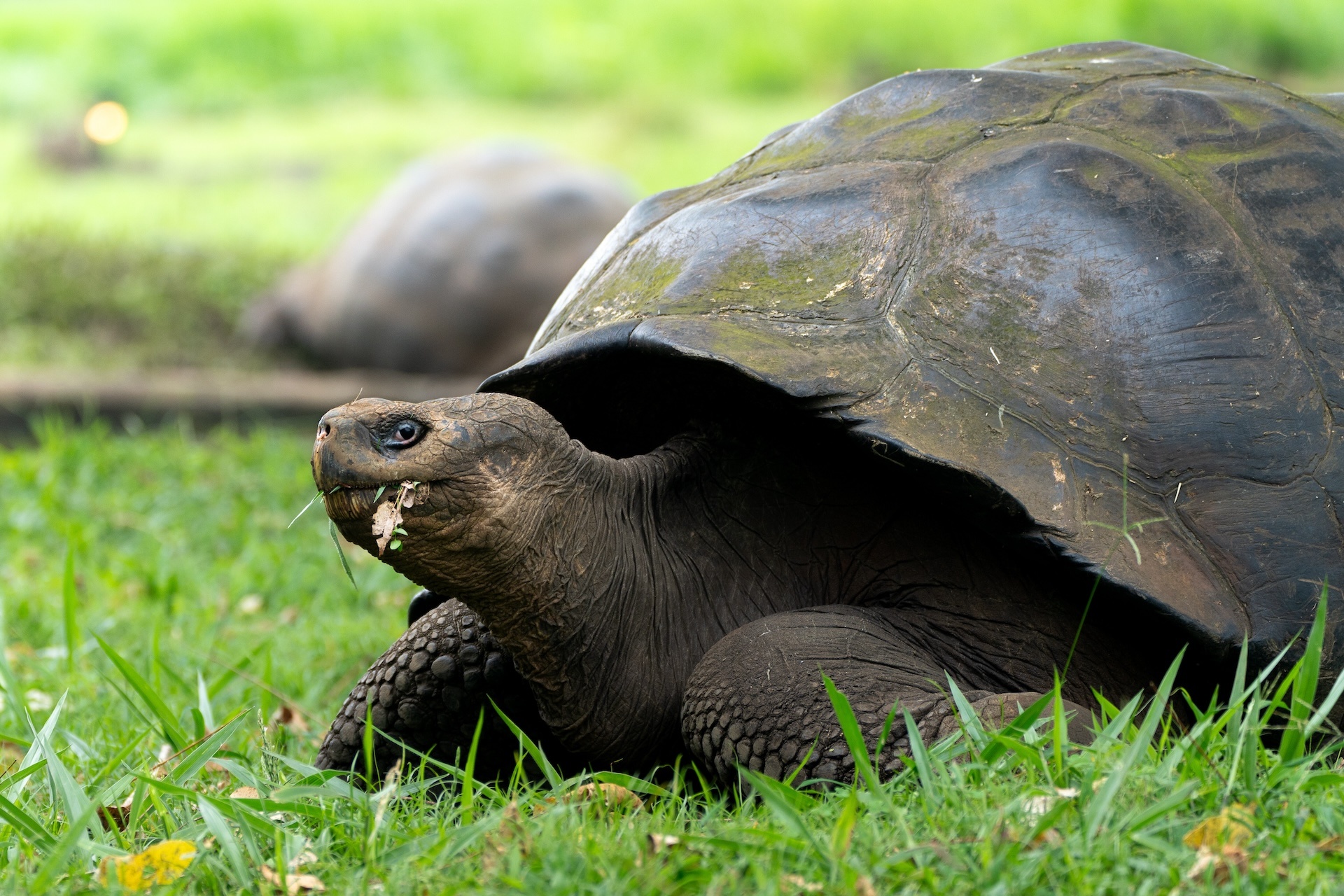
Giant tortoise © Rashid Cruz
Visitors on the Nat Hab Galapagos photography expedition will visit the world-famous tortoise center, Fausto Llerena Breeding Center, in Puerto Ayora to see and learn about these endangered reptiles and the conservation efforts to protect them and their unique habitats.
The center, managed in partnership with the Charles Darwin Research Station and the Galapagos National Park, has bred and released more than 5,000 tortoises into the wild. Visitors to the center even get to see and photograph tiny hatchlings.
> Learn More: Conservation in the Galapagos Islands
In the misty highlands of Santa Cruz, Nat Hab’s private Tortoise Camp offers a rare and exclusive opportunity to spend the night in the habitat of wild tortoises. The camp provides plenty of chances to photograph free-roaming tortoises up close or from raised safari-style canvas tents and elevated treehouses.
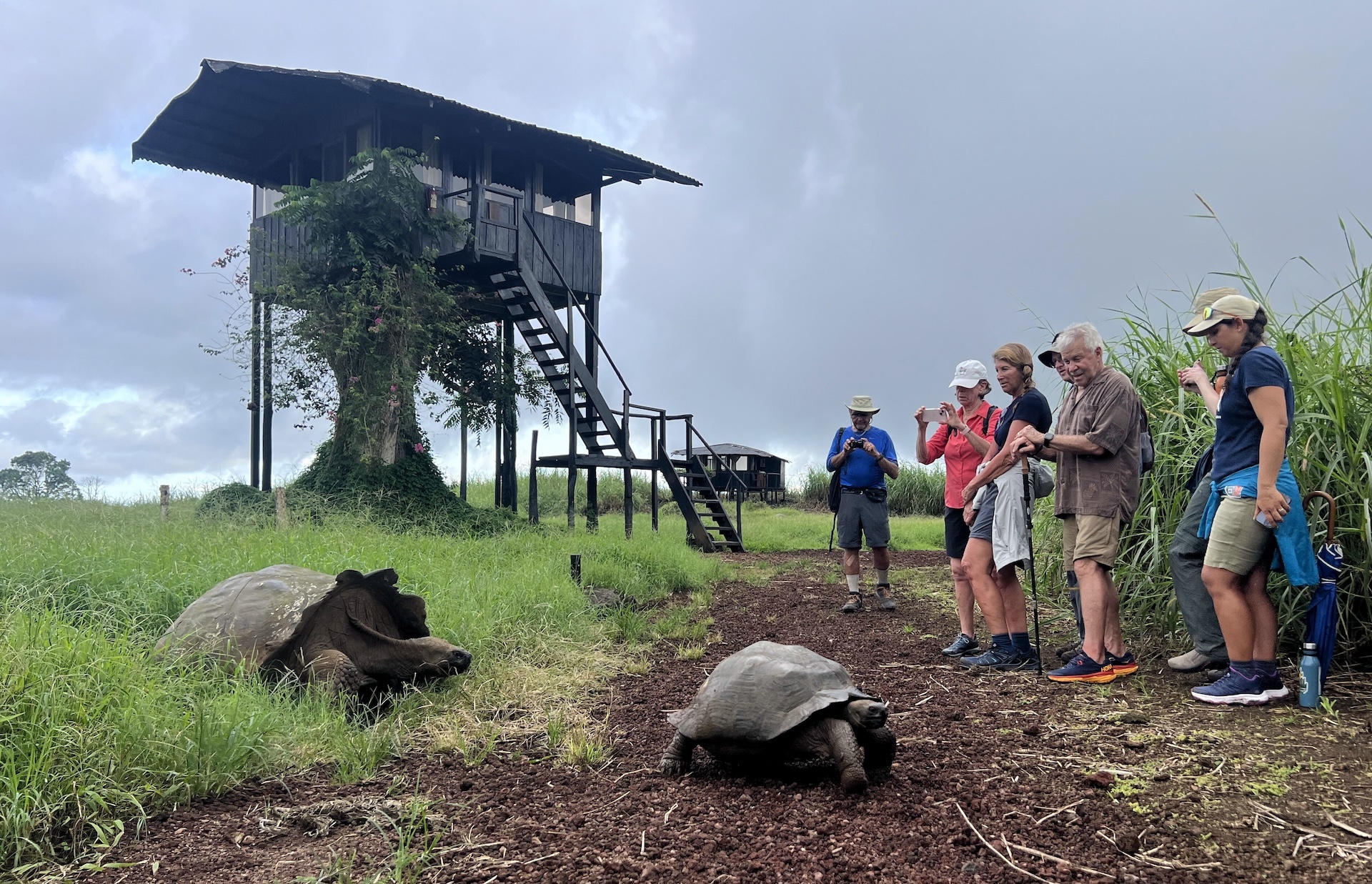
Guests at Nat Hab’s private Tortoise Camp in the Galapagos © Luis Vinueza
Land Iguanas
The Galapagos land iguana is a large and bulky lizard endemic to the islands. Visitors can see them sunbathing alongside the footpaths and on rocky shores, munching on vegetation, or resting under massive cactus plants. These 3-foot-long lizards are plant-eaters and come in shades of yellow with blotches of black and brown. Galapagos land iguanas are among three species of land iguanas in the region; the other two are the Santa Fe land iguana and the critically endangered Galapagos pink land iguana.
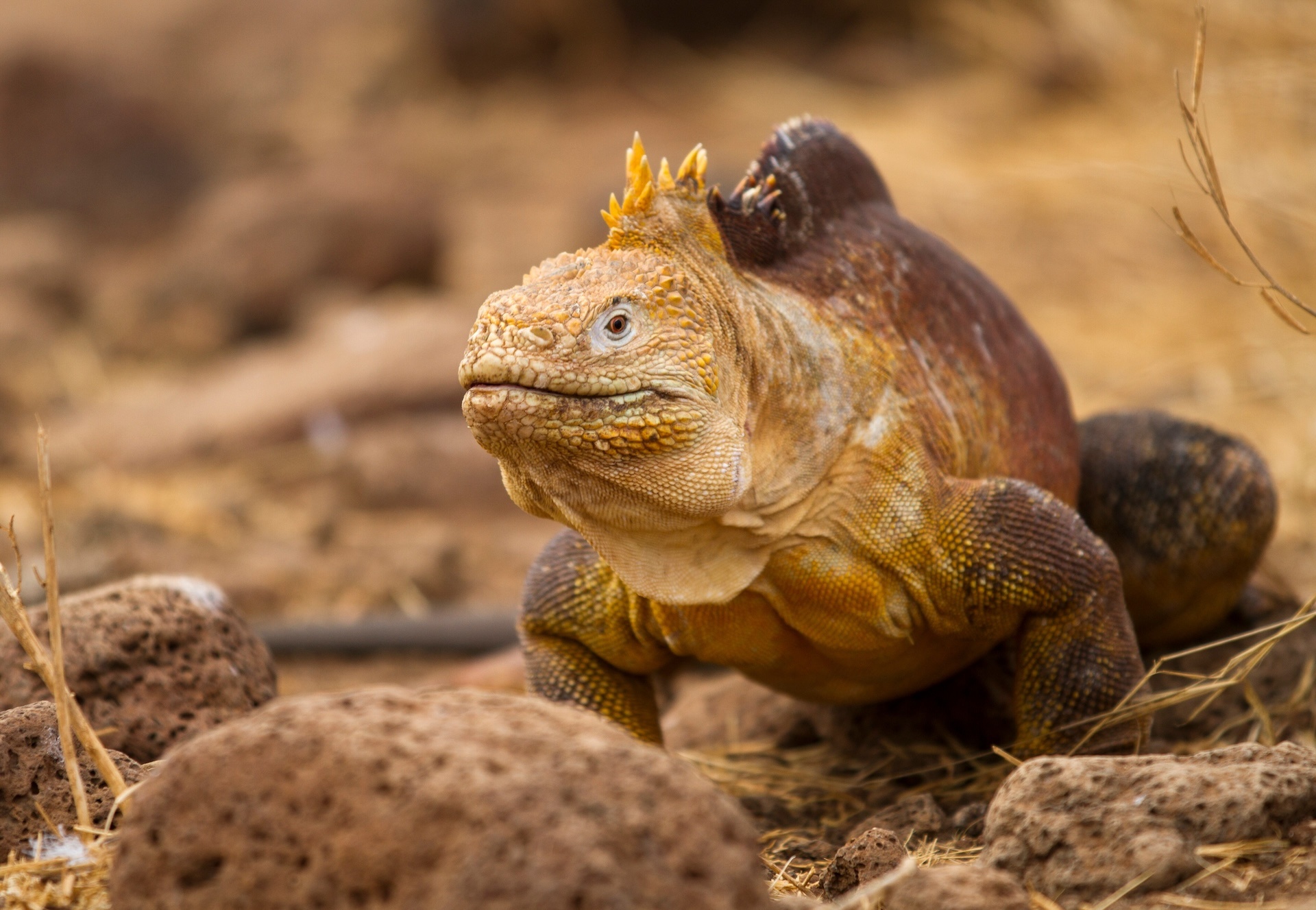
Galapagos land iguana © Court Whelan
Visitors to the South Plaza islet can occasionally spot the elusive hybrid iguana, a result of breeding between marine and land iguanas. Their large stature and brilliant yellowish-orange hues—set against the technicolor backdrop of sprawling Galapagos carpetweed and prickly pear cactus trees that adorn the landscape—make them ideal subjects for the camera.
In addition to land iguanas, keep an eye out for lava lizards—the most abundant reptile on the islands.
Marine Life
Sea Lions
Any trip to the Galapagos should provide numerous sightings of Galapagos sea lions (a subspecies of the Californian sea lion), both on land and underwater. Sea lions are pinnipeds with external ears (unlike seals, which have tiny holes for ears). Their range includes the entire archipelago, and you’ll often spot them sleeping on boats, docks, beautiful beaches and shore rocks. Underwater, their strong fore flippers propel them as they do flips and hunt for food.
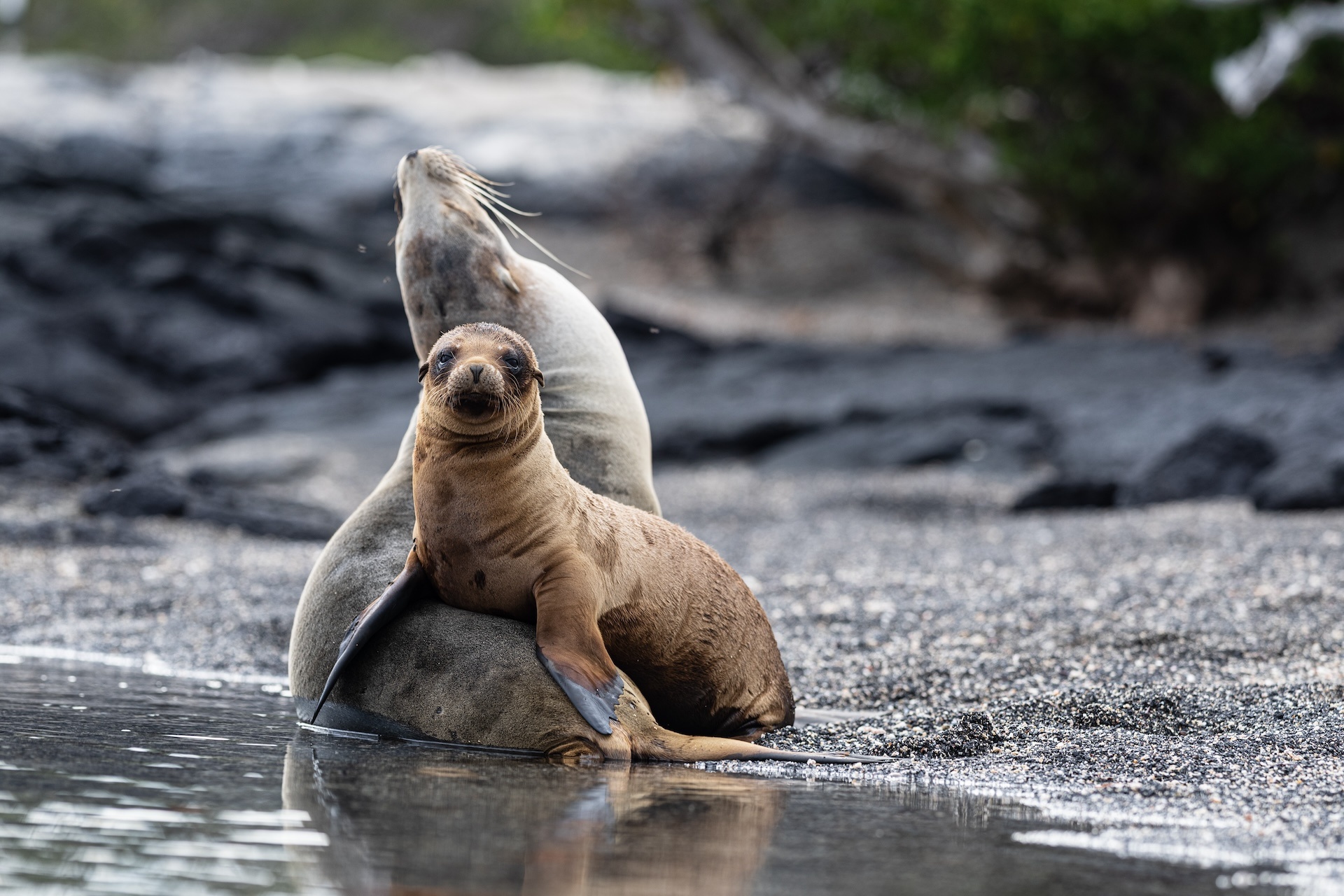
Galapagos sea lions © Richard de Gouveia
One of the best spots to find sea lions in the Galapagos is at Gardner Bay on Española, where a large colony of sea lions with their juveniles can be seen on the long stretch of the white sand beach; the outing also offers a unique chance to swim with them right from the beach.
While there will be myriad opportunities to photograph sunbathing sea lions, nothing beats a perfectly timed portrait shot of a curious sea lion with its bulging eyes and whiskers twirling in front of you underwater. Grab your snorkeling gear and water-proof camera (or a GoPro) to capture these playful animals where they typically hang out—right under the surface. Don’t forget to spin when they swim; sea lions are nicknamed “puppy dogs of the sea” as they are curious and playful and love to interact with each other and with people.
The region is also home to the endangered Galapagos fur seal, which can be spotted in the lava grottos at James Bay in Santiago, one of the few places in the entire archipelago where you can witness and photograph these shy, endemic animals from the land. Although they’re called fur seals, they’re actually another type of sea lion!
Snorkeling in the Galapagos also affords abundant chances to photograph other captivating subjects, such as Pacific green sea turtles as they effortlessly glide underwater, graceful eagle rays and schools of colorful tropical fish whizzing by above vibrant coral reefs. Lucky travelers may even spot harmless reef-tip sharks moving silently among schools of fish.
Marine Iguanas
When underwater volcanic eruptions formed the Galapagos islands, the environment was initially too harsh to sustain life. It was cold-blooded reptiles that first made the journey from the mainland on vegetation rafts and populated the newly formed islands. Among these reptiles are the salt- and extreme weather-tolerant marine iguanas.
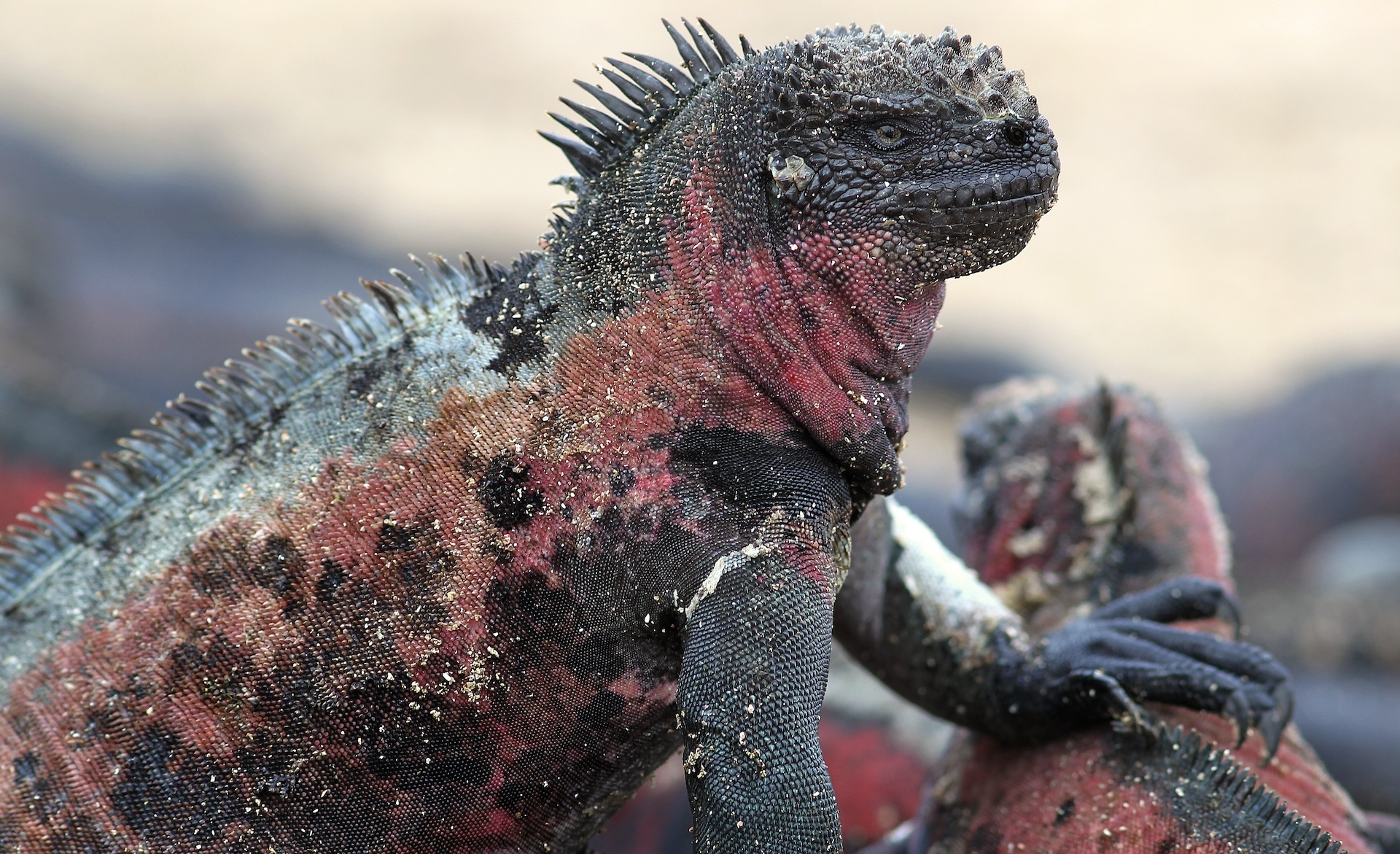
Galapagos marine iguana © Eric Rock
The Galapagos marine iguana is the only ocean-going lizard species in the world. Although they aren’t very social, they often lay on top of one another or in clusters on coastal or lava rocks, mangrove swamps, and beaches to conserve heat when not swimming in search of food. You may even see them spitting out salt!
These fascinating creatures are black during the non-mating season, but the backs of the males turn red or dull green (depending on their location) to attract females during the mating season. The marine iguanas of Española Island—the most sought-after iguanas for photos—are aptly named “Christmas iguanas” for their gorgeous green and red skin colors.
Birds
Blue-Footed Boobies
Blue-footed boobies are some of the most entertaining seabirds you will encounter during your expedition. You’ll find them along hiking paths and on rocks, as well as plunge-diving into the water from rocky cliffs. Their most distinctive feature is their bright blue-colored webbed feet, which get their hue from the fresh fish they consume.
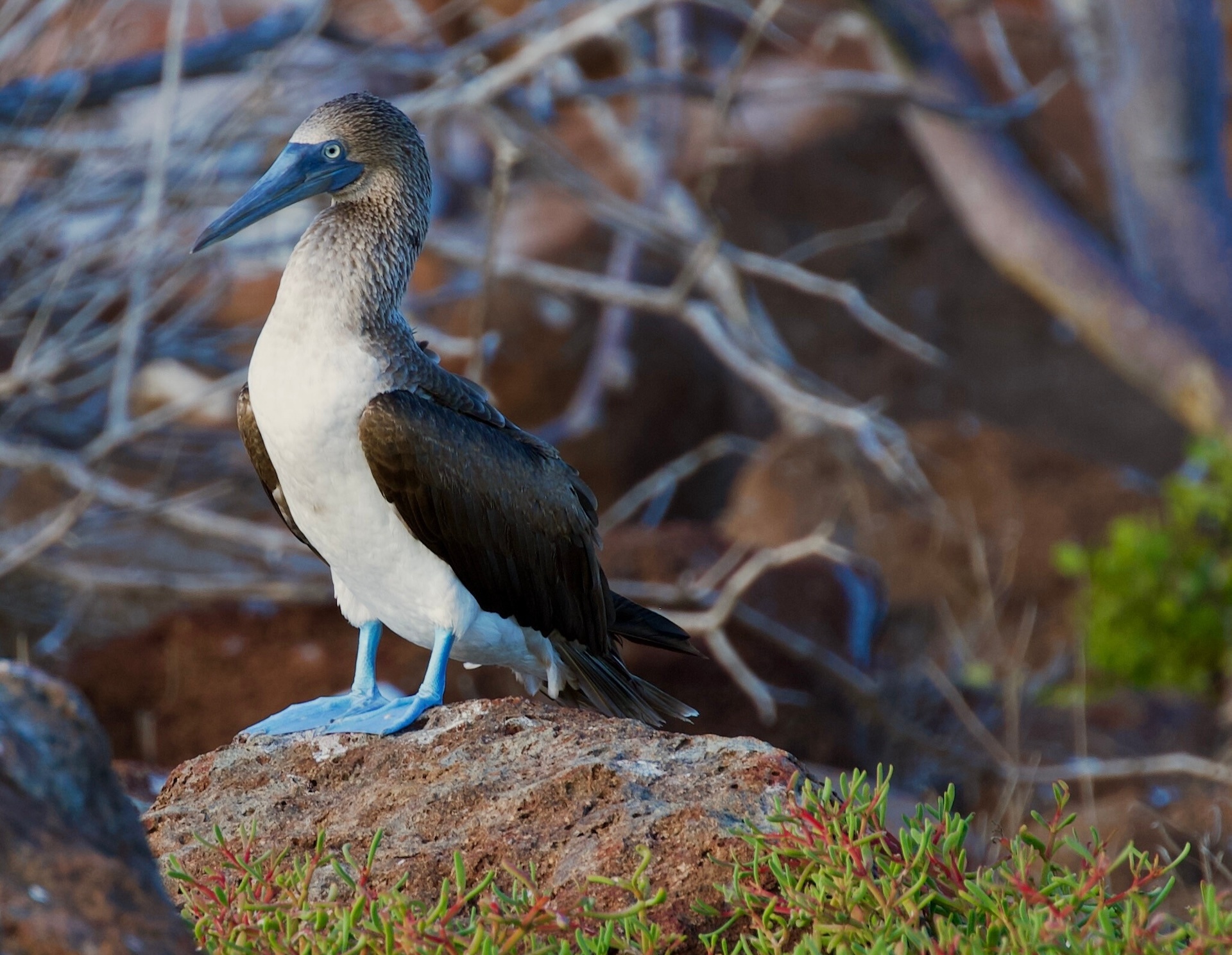
Blue-footed booby in the Galapagos © Vera Irions
These birds are typically seen in pairs, engaging in a comical courtship dance that involves strutting and flashing their webbed feet, pointing their beaks skyward and raising their wings. Their name comes from the Spanish word bobo, which means silly.
Blue-footed boobies are the most common among the booby birds that live on the islands; the other two subspecies are red-footed (for their pale red feet) and Nazca boobies (white with black feathers). The best place to photograph these adorable seabirds and their nesting grounds is North Seymour Island.
Galapagos Penguins
The Galapagos penguin is one of the most sought-after birds for those on a cruise to the Enchanted Isles. Smaller than your average duck (weighing just under six pounds) and sporting milky white bellies and black and brown feathers on their backs, they resemble a tuxedo. These flightless birds are the only species of penguin living north of the equator. Visitors will likely hear their braying before spotting them.
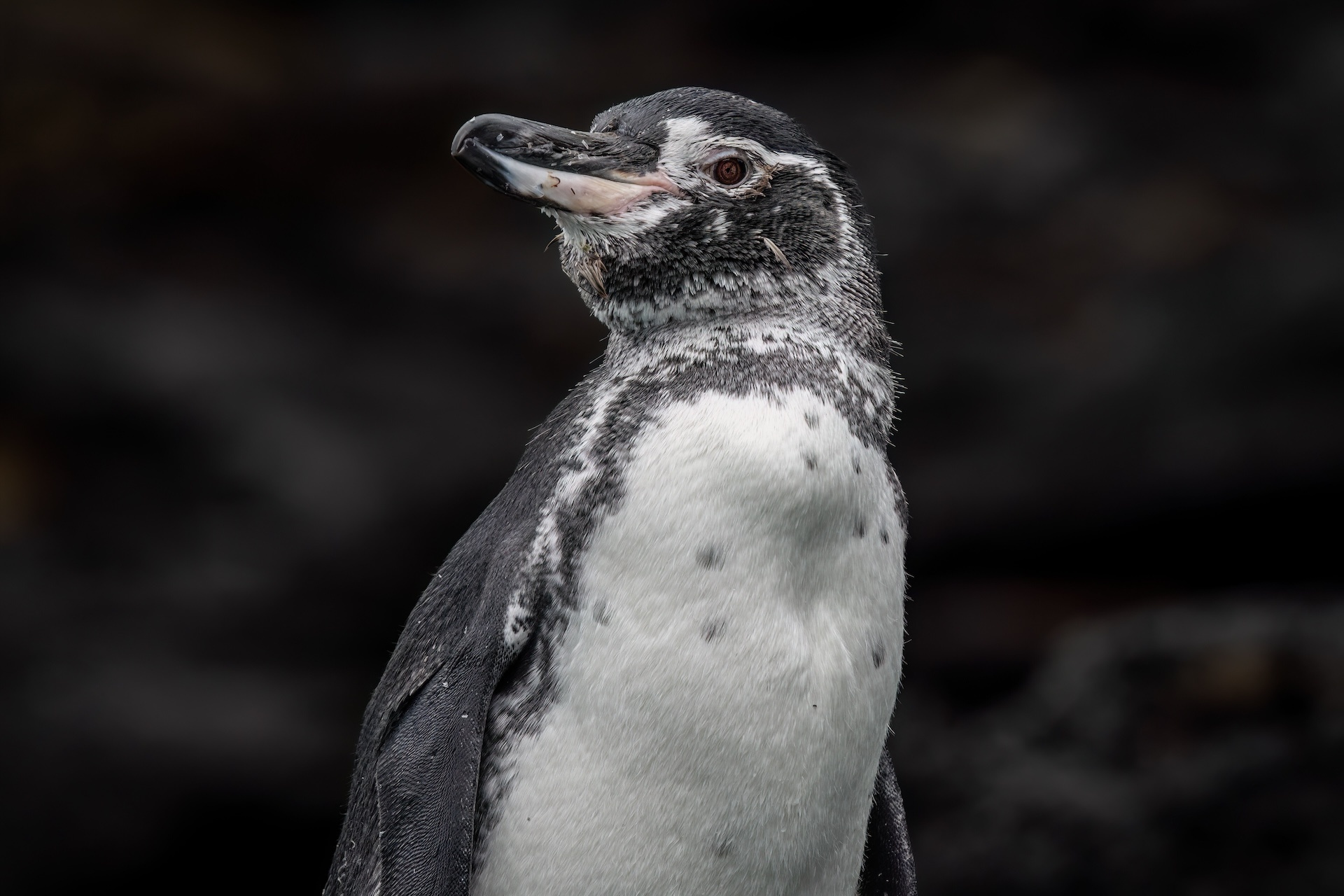
Galapagos penguin © Mike Hillman
Sadly, Galapagos penguins are endangered, and their populations have dwindled due to climate change, pollution and bycatch. Their population currently stands at approximately 1,800 individuals.
Waved Albatrosses
The title of the largest bird in the Galapagos goes to the waved albatross. With a whopping 7 to 8-foot wingspan and weighing up to 11 pounds, these majestic birds get their name from the wavy lines on their white undercarriage. The entire population of this subspecies lives on the island of Española near Punta Suarez, where visitors can witness them engaging in a raucous mating ritual of tapping their yellow hook-tipped bills enthusiastically and making honking and whistling sounds.
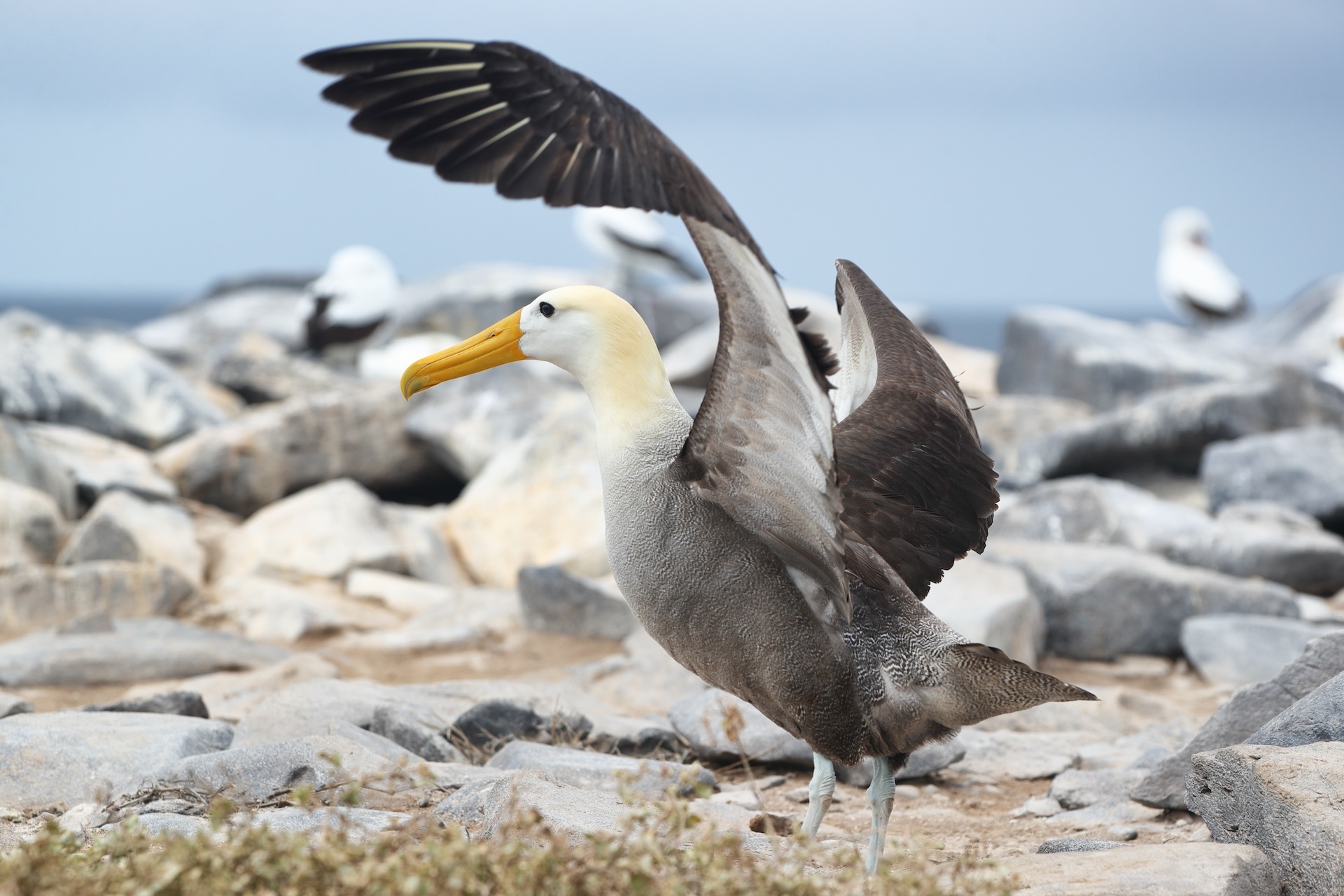
Waved albatross
In the winter, between January and March, adult waved albatrosses use the island’s rocky cliffs as a springboard to begin their journey across the Pacific to the coasts of Peru and Ecuador in search of food. Waved albatrosses mate for life, splitting up during the winter when they go hunting and returning to the same breeding grounds year after year. Like the Galapagos penguin, the waved albatross is threatened by climate change, overfishing and pollution.
Frigatebirds & Other Native Birds
Frigatebirds, with their enormous red-colored throat pouches, are some of the most commonly spotted birds on a Galapagos cruise. They have earned the nickname of “pirate birds” for their tendency to hover above blue-footed booby fishing grounds, waiting to steal their catches. They’ve also been known to catch free rides in the wake of ships. The largest colonies of frigatebirds are in North Seymour and San Cristobal.
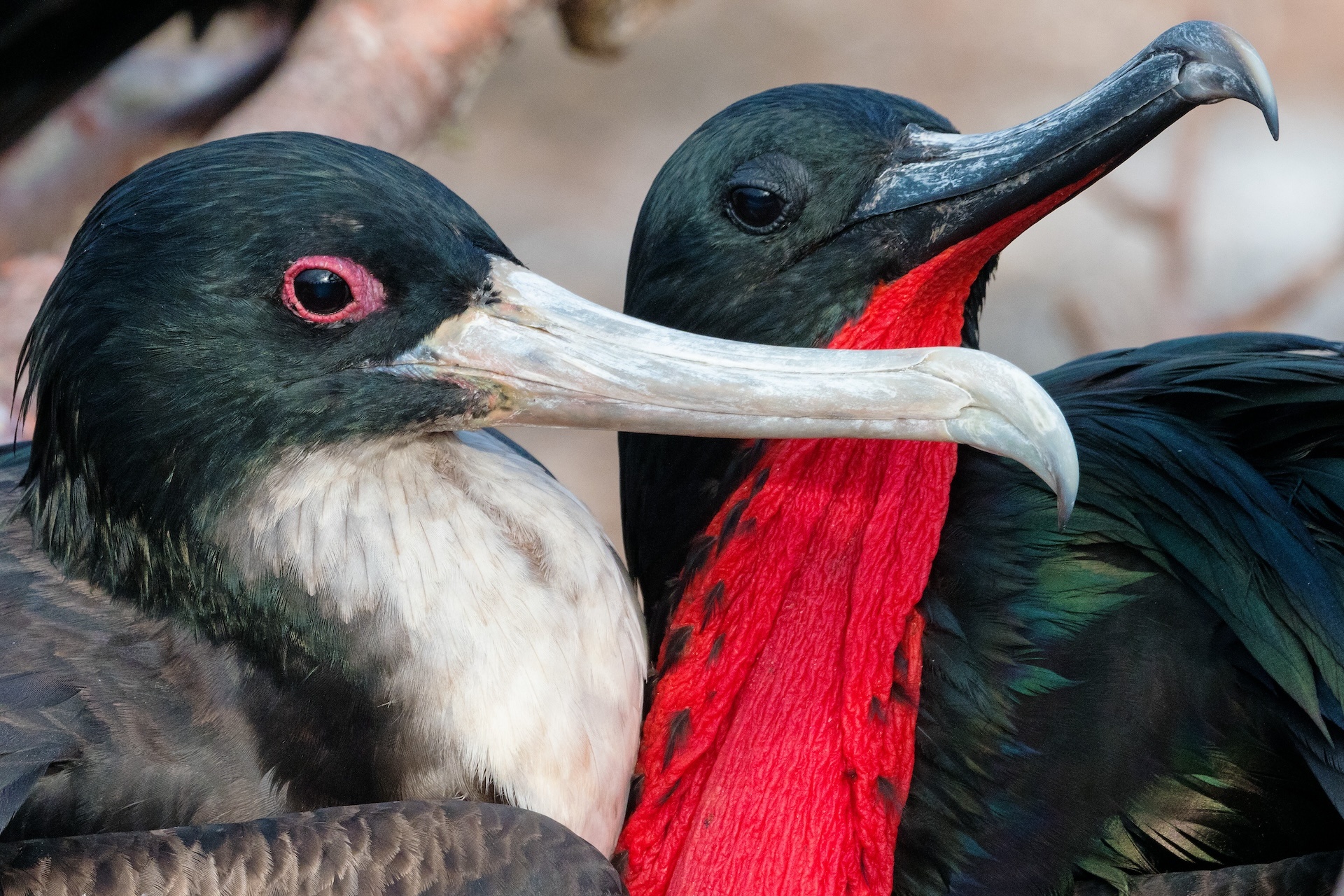
Frigatebird © Cassiano “Zapa” Zaparoli
Birders can grab their telephoto lens to shoot images of other birds native to the islands, including flightless cormorants, Galapagos hawks, Galapagos petrels and several types of finches (including Darwin’s finches, which played an important role in inspiring the famed scientist’s theory of evolution!) during hikes or panga boat outings.
Natural and Historic Wonders
Kicker Rock
The most recognizable natural wonder in the Galapagos is Kicker Rock, also known as León Dormido, a monolithic rock formation towering 500 feet above the water’s surface in the middle of the Pacific Ocean. The natural feature consists of two large, eroded volcanic rocks separated by a channel. The channel provides habitat for white-tipped reef sharks, rays, reef and pelagic fish, sea turtles and sea lions, making Kicker Rock a popular snorkeling destination.
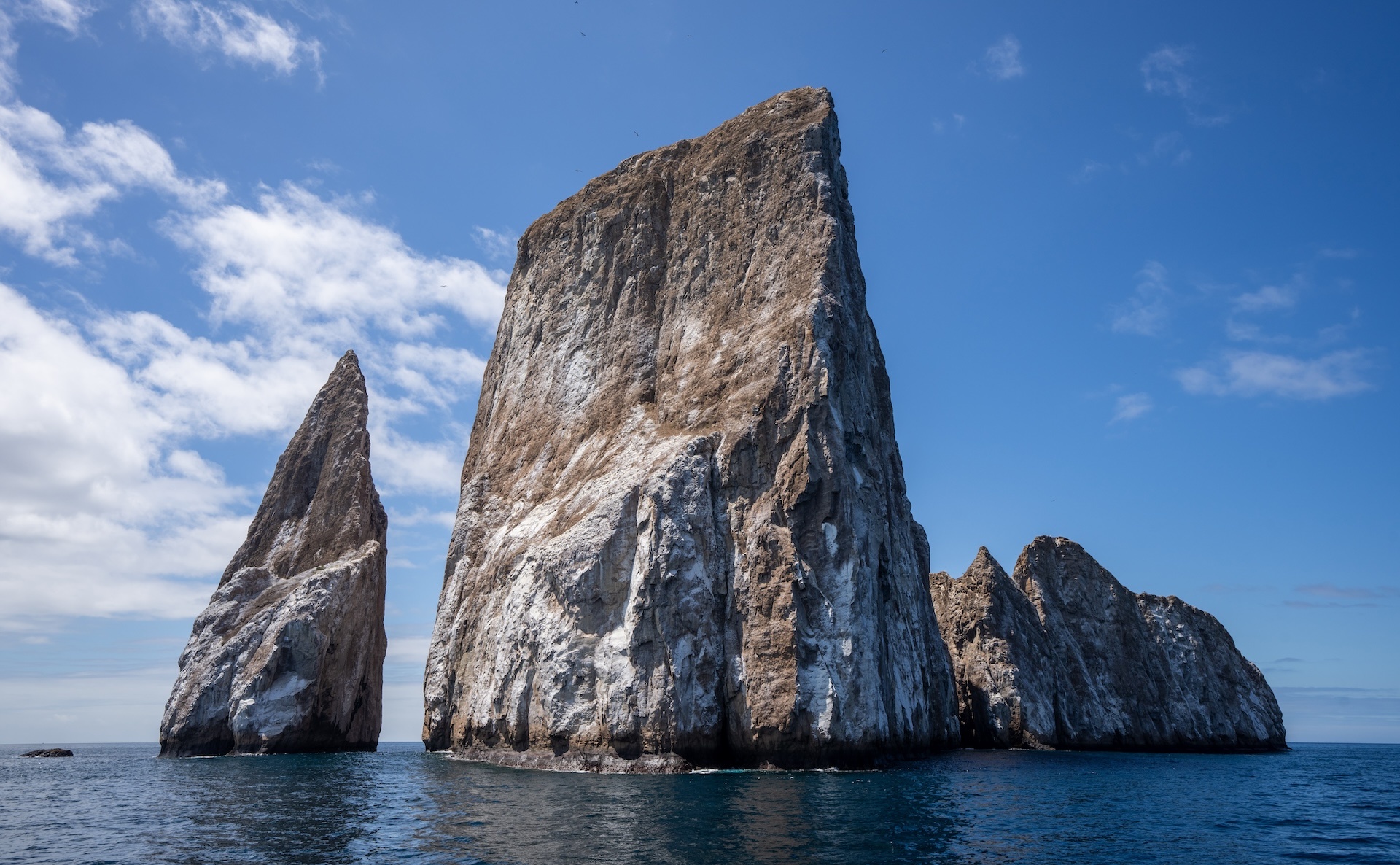
Kicker Rock © Mike Hillman
Kicker Rock is a two-hour boat ride from San Cristobal island. It can be seen from various smaller islands such as Isla Lobos, which boasts a resident sea lion colony and blue-footed boobies.
Frame the perfect shot of sea lions in the foreground and the iconic Kicker Rock in the distance from Isla Lobos, or wait for the sun to set to catch the golden light reflected on the monolith. Get up close on a panga ride to get snaps of birds like Nazca boobies, frigatebirds and other native birds.
Pinnacle Rock
Stepping onto the tiny uninhabited Bartolome island, an ancient submerged volcano, feels like you are on another planet. Ancient lava rocks and darkened soil merge with rust-colored sand, and fascinating geological formations dot the landscape. A pristine crescent-shaped beach makes for the perfect stop for a swim in the turquoise-colored waters teeming with marine life like sea turtles, stingrays, reef sharks and schools of fish.
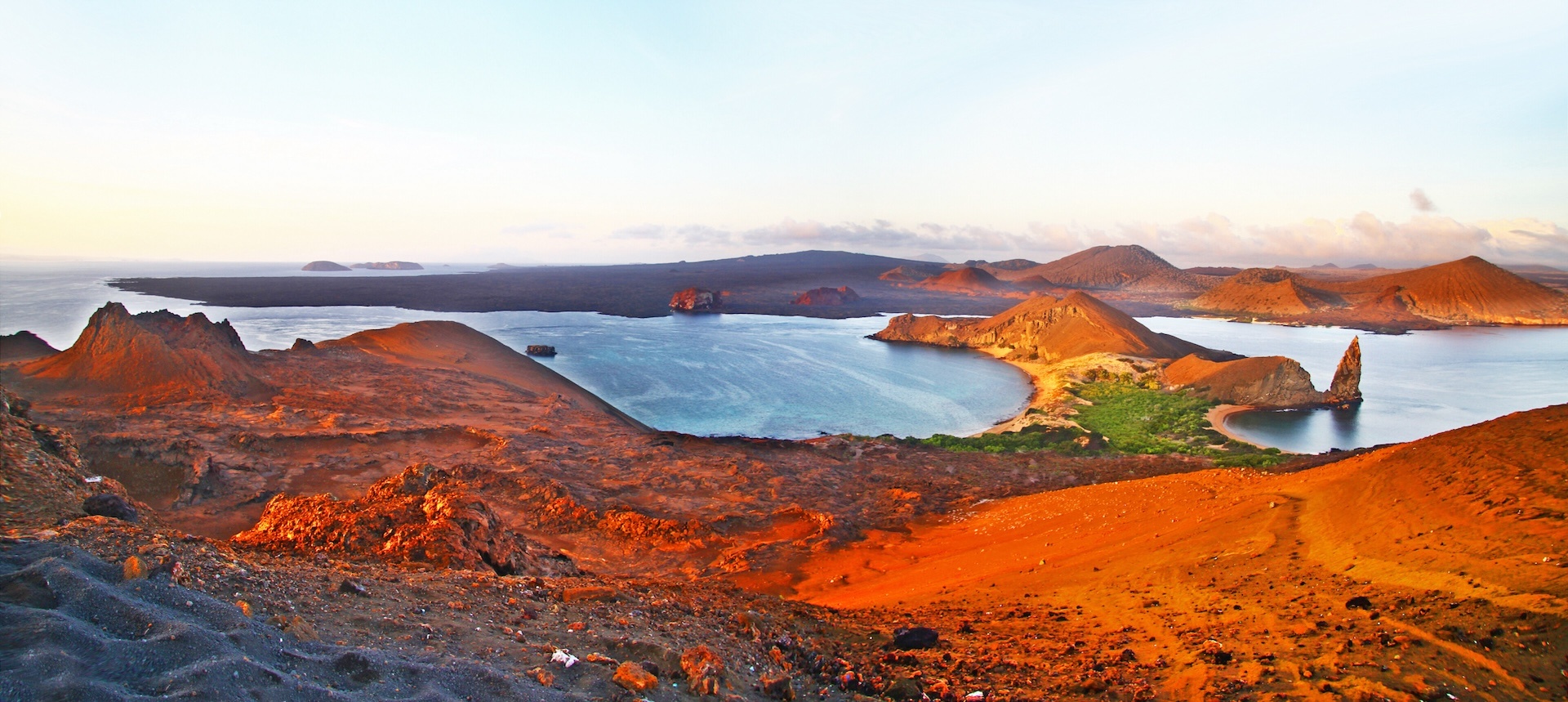
Pinnacle Rock © Cassiano “Zapa” Zaparoli
Climbing to the island’s highest point offers a 360-degree view of this otherworldly landscape, including Pinnacle Rock, a pointed formation just off the shore that is undoubtedly one of the most photographed and treasured sight in the Galapagos.
Quito’s Historic Old Town
The day before setting out on the cruise, Nat Hab travelers get an entire day to admire the sights and photograph Quito’s 16th-century Old Town, a UNESCO World Heritage site. On a guided photography tour, you can wander the cobblestone lanes and photograph the grand plazas, Morrish and Indigenous-influenced buildings, Spanish architecture, and ornate churches.
Must-see attractions include the Government Palace, La Compañia Church, Metropolitan Cathedral of Quito, Basilica of the National Vow and Independence Plaza, from which you can see the Archbishop’s Palace Cathedral and the Presidential Palace.
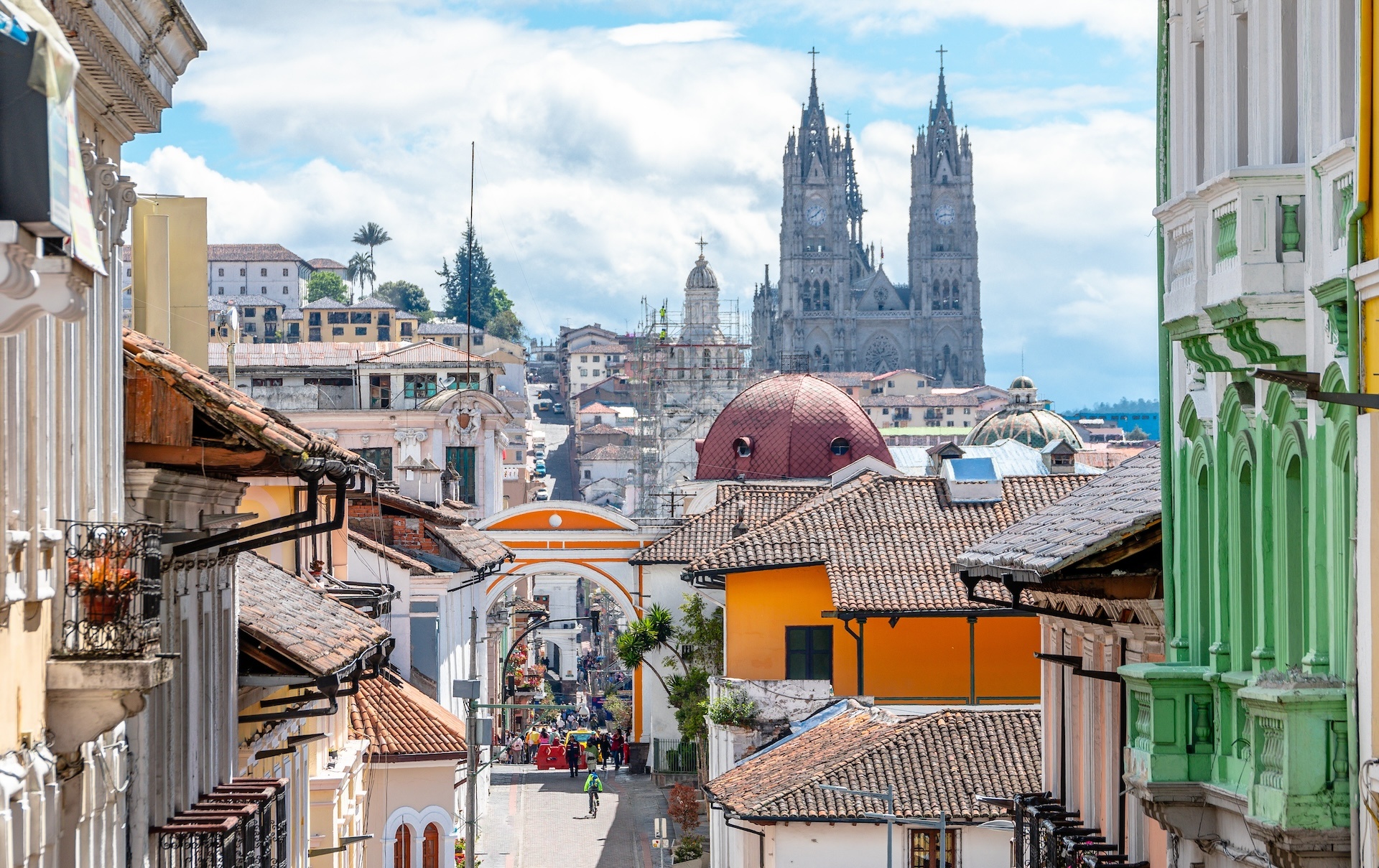
Old Town in Quito, Ecuador
Local markets offer a peek into the lives of the residents and a chance to meet them and snap a collage of subjects from herbs and flowers to fruit and vegetables, along with Andean arts, crafts and textiles. The top of Panecillo Hill provides a panoramic view of the city and the surrounding volcanic peaks.
Ready to photograph the wonders of the Enchanted Isles? Grab your camera and embark on our new Galapagos Wildlife Photo Expedition!
The post Capturing the Enchanted Isles: 11 Must-Take Galapagos Photos first appeared on Good Nature Travel Blog.
